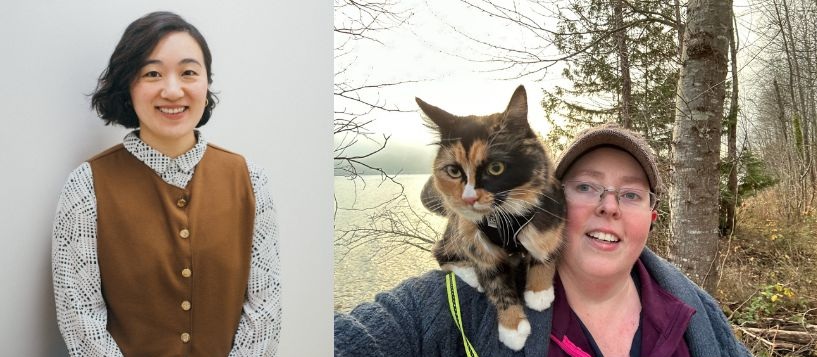Workshop - Disability Justice and Local Government: Tools for Change
From curb cuts to bus routes to public space accessibility, decisions made at city hall impact the lives of people living with disabilities daily. Women Transforming Cities (WTC), a grassroots organization working to reshape who cities are built by and for is partnering with Live Educate Transform Society (LET’S), a nonprofit organization active in the disability, neurodivergent and 2SLGBTQIA+ communities to co-deliver a 90-minute interactive workshop on Disability Justice and local government.
To demystify what happens in our local governments, the workshop will cover:
- Important terms and key people at City Hall
- Ten principles of Disability Justice and discussion of how they apply to civic engagement
- How local decisions that affect the disability community are made and ways to influence those decisions
- Feedback channels to have your needs heard
- Resources available to reduce the barriers to civic engagement
Together, we will explore the issues that matter to you and how to advocate for Disability Justice at City Hall.
When: November 4th, 1 pm PT
Where: Zoom
Register here: https://us02web.zoom.us/meeting/register/mJ8kpOxIQzm_WkfJgXyjjA
Co-Facilitators

(L-R: Florence Li, Heather McCain)
Florence Li (she/her) is the Education Coordinator at Women Transforming Cities. She is an educator with a background in grassroots organizing and anti-racist advocacy. From facilitating in college classrooms and community settings to parenting two young children, as Education Coordinator at Women Transforming Cities (WTC), she strives to cultivate safer spaces that allow for curiosity and critical thinking to thrive. Through building civic literacy and knowledge sharing, she hopes to inspire participants to incite systemic change.
Heather McCain (they/them) is Executive Director of Live Educate Transform Society (LET’S), a non-profit they founded in 2005. Heather’s own experiences as an asexual, disabled, neurodivergent, queer, trans person led them to become a well-known and respected advocate, educator, and speaker. Heather is proudest to be called a Crip Doula. This is a community given Disability Justice term for someone who helps disabled people navigate our complex systems, providing resources, support, and building community. This title was gifted by community members who have felt the positive effects of Heather’s work.
Article: Looking "Too Good" To Have a Disability
This article was written by Michael Todaro, and originally appeared in DABC’s Transition magazine on Disability Justice (Spring 2022). Read the issue here.
In the year that I was applying for my Persons with Disabilities (PWD) designation, I have to admit I did a lot of soul-searching.
I knew I wouldn’t be taken seriously. Apparently, I looked great, as people never stopped telling me.
”You don’t know how good you have it,” said one friend, and others told me it was “all in my head.”
The reality was I was lethargic, could barely walk or talk most days and, as a rule, I didn’t sleep. My pain levels were unbelievably high day and night. I was 20 pounds underweight, anxious, depressed and suffering from post-traumatic stress. The circles under my eyes were permanent and made me look like an unimpressed raccoon. I was dizzy all day long.
On the day of my appointment with the doctor who would evaluate me for PWD, I got dressed and tried to look my best. I had been taught that if you wanted to be taken seriously, you have to dress well, so I was determined to make the best impression I could.
Are you laughing yet?
Because my pain levels were so high that day, it took me three hours to get ready. The morning routine for a person living with chronic health issues can be debilitating. Taking a shower, washing hair, getting dressed— all of these things take time and energy and, when you have neither and are in chronic pain, it makes for a rough day.
On this day, I was proud of myself because, despite wave after wave of pain, I was able to get it together and even looked pretty good to boot! In retrospect, I guess I looked too good. “Dressing for success” clearly doesn’t work if, as a result, the doctor thinks you are faking your disability.
When I arrived at the doctor’s office, instead of his usual friendly self, he scowled at me from behind his desk. I waited, watching this change in his demeanour.
After staring at me a few minutes, he said in a rage, “How dare you come into my office looking that good and expect me to help you with your disability application!”
In spite of being a well-educated doctor who had treated me for 14 months, he thought I looked too good to have a disability. To be honest, I had not been interested before in displaying my disability. I had kept it hidden. So he was surprised when I stopped hiding it.
His behaviour was pretty shocking. But it’s something that people with less visible disabilities face every day.
It’s true that people can sometimes be cruel, but, if we are kept ignorant and unaware of the needs and experiences of others, how can we be expected to know what to do? As a group, people with disabilities will remain vulnerable where this kind of ignorance prevails.
I don’t believe the onus of responsibility for creating space for all people with disabilities lies with the uninformed public. It lies with the governing bodies and services we use. These are the organizations which have yet to champion legislation that supports and protects people with various types of disabilities.
Our signage on BC buses, for example, often reads like a suggestion: “Please remember who these seats are for.” I think this is misguided and, in my experience, not that effective because not every person or culture views disability with compassion. By comparison, a sign in the US reads, “Disabled use only, $300 fine.” A clear message with a clear consequence.
It is time for all of us to do better for people living with invisible disabilities. London, England has found one way to do it. If you need to sit down on public transit, you can order a button that identifies you as someone who needs a seat.
People are not asked to justify their disability to receive a button. An education campaign told the public they were expected to offer a seat to someone who wore the button. TransLink could easily spearhead a similar program here in BC.
This takes the burden off the person with a disability to explain, each time, why they need a seat! Not everyone is always up for or well enough to fight that tiring battle.
I think this is an excellent approach to dealing with invisible disabilities while traveling because it legitimizes a person’s needs in the minds of those who might find fault with them. This also helps to remove anger from the equation, and focuses on a sustainable solution for people who do not look like they have a disability.
For passengers with a disability who are often not believed or taken seriously, a small change in the way we do things in BC could ensure the safety of people with visible and invisible disabilities.
References
CDC: Lupus Symptoms https://www.cdc.gov/lupus/basics/symptoms.htm
Please Offer Me a Seat at the Transport for London government website: https://tfl.gov.uk/transport-accessibility/please-offer-me-a-seat
Michael Todaro is an editor, writer and instructor living in the Vancouver area.





